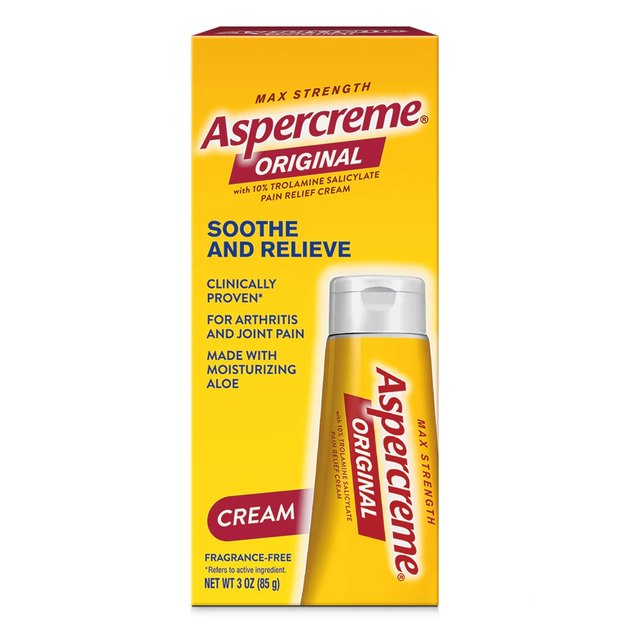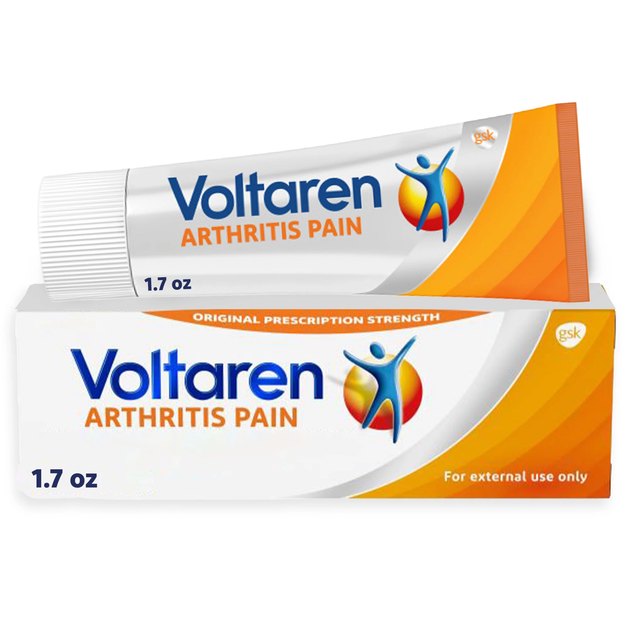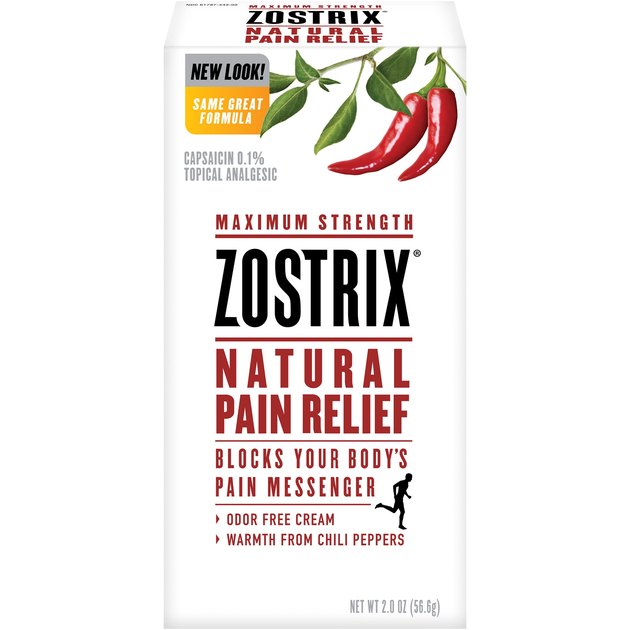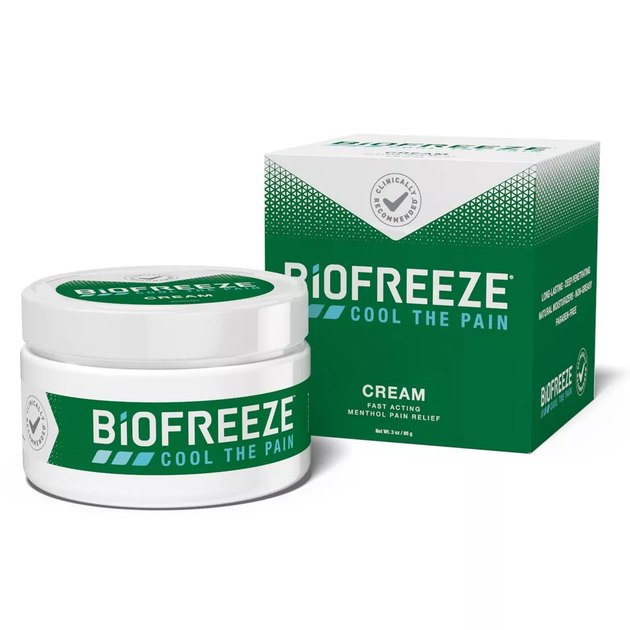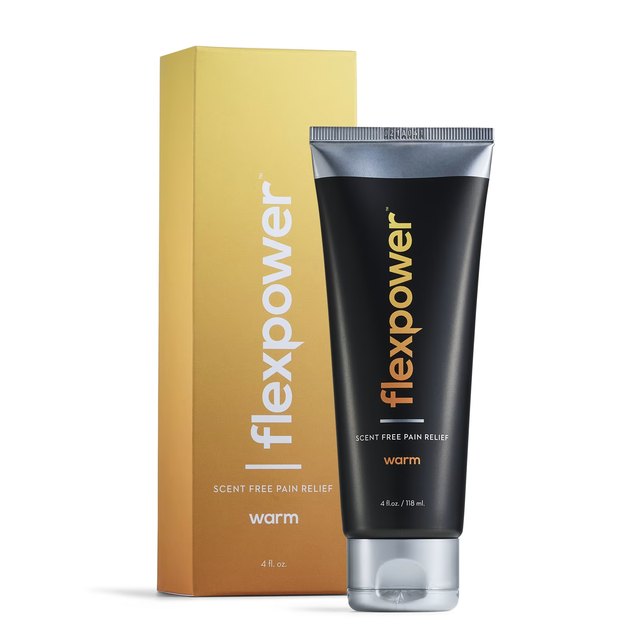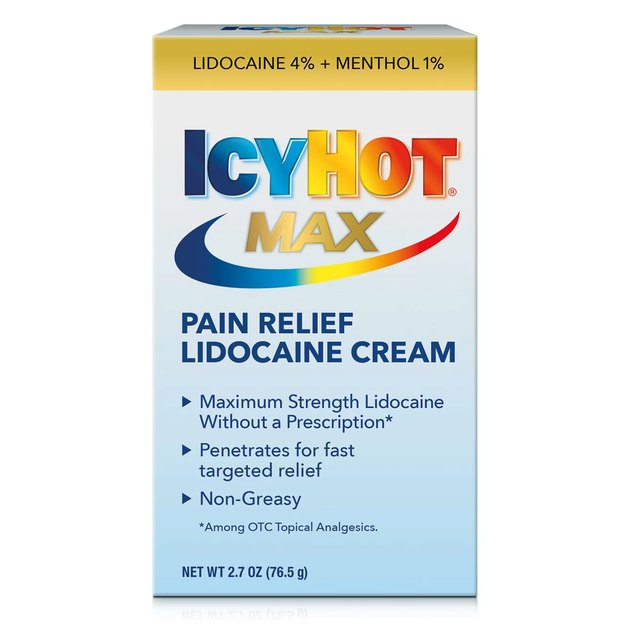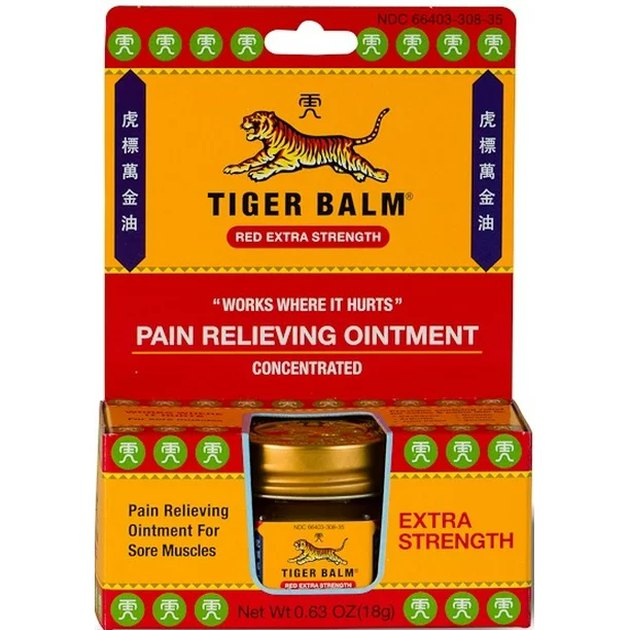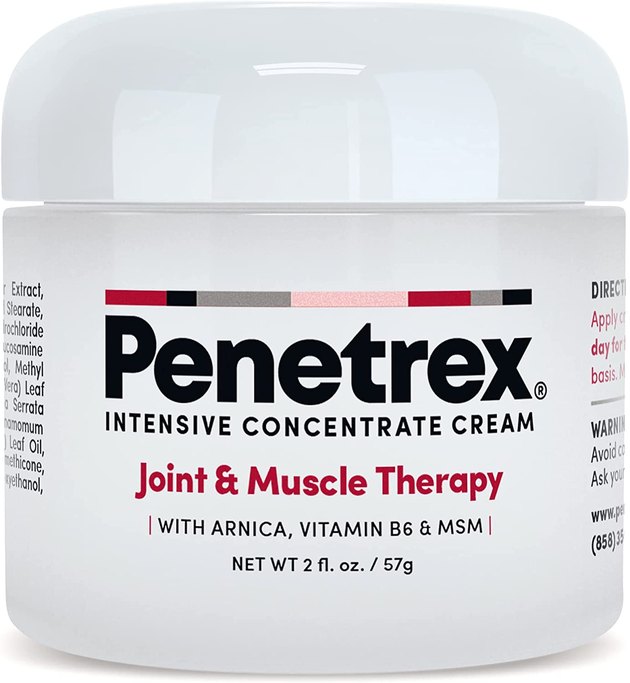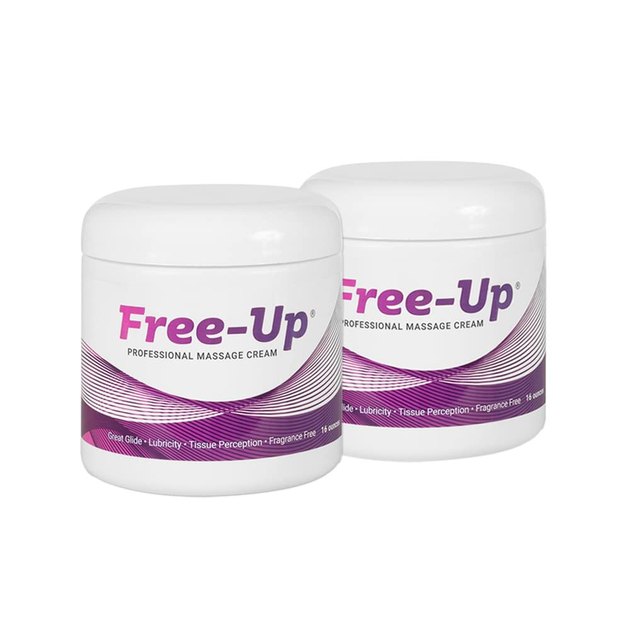
Sore shoulder? Achy knee? If ice or hot packs don't seem to be helping, an over-the-counter topical pain-relief cream can offer more serious soothing power.
"When used after proper evaluation, they can be effective in various chronic pain conditions, not just limited to back pain or arthritis," Vivek Mehta, MD, pain management physician at Texas Health Arlington Memorial Hospital, tells LIVESTRONG.com. "In many situations, they have excellent tolerability because of low systemic absorption of drugs and usually a low incidence of side effects."
Video of the Day
Video of the Day
But with so many options to choose from, it can be tough to tell whether a cream in question will give you the relief you need. Here are expert-backed picks that deliver, plus tips on buying the best pain-relief cream and using it safely.
How We Chose
We spoke with a pain management specialist to round up the best pain-relief creams, with the following criteria in mind:
- Active ingredients
- Cost
- Delivery method
The Best Pain-Relief Creams
- Best Overall: Ultra-Strength BENGAY Pain Relief Cream ($7.37, Amazon)
- Best for Back Pain: Aspercreme Maximum Strength Pain Relief Creme With Aloe ($6.12, Walmart.com)
- Best for Joint Pain: Voltaren Arthritis Pain Relief Gel ($10.46, Walmart.com)
- Best for Shingles: Zostrix Maximum Strength Natural Pain Relief Cream ($21.81, Amazon)
- Best Cold Therapy: Biofreeze Cream ($11.98, Amazon)
- Best Hot Therapy: Flexpower Warm Lotion ($72, Flexpower.com)
- Best Hot-Cold Therapy: Icy Hot Max Strength Pain Relief Cream With Lidocaine ($7.49, Amazon)
- Best on a Budget: Tiger Balm Extra Strength Pain Relieving Ointment ($5.76, Walmart.com)
- Best Homeopathic: Penetrex Joint & Muscle Therapy ($18.95, Amazon)
- Best for a Massage: Free-Up Professional Massage Cream ($29.94, Walmart.com)
1. Ultra-Strength BENGAY Pain Relief Cream
Pros
- Non-greasy
- Numbs and soothes
Cons
- Strong fragrance
Minor aches and pains or the occasional sprain or strain respond to creams like BENGAY, which contains a local anesthetic plus a soothing agent, says Medhat Mikhael, MD, pain management specialist and medical director of the non-operative program at the Spine Health Center at MemorialCare Orange Coast Medical Center in Fountain Valley, California.
"It has an analgesic effect with cold and a vasodilating effect with heat that improve healing and blood supply to the area, with an added local anesthetic to numb the area," he says.
What else makes BENGAY the best overall pain-relief cream? The formulation is non-greasy, so it feels good on your skin and won't leave stains on clothing.
2. Aspercreme Maximum Strength Pain Relief Creme With Aloe
Pros
- Active ingredient helps numb aches
- Odor-free
Cons
- May be hard to squeeze cream out of container
"Topical formulations are made with a base and active ingredient, which can be optimized for a particular site on the body," Dr. Mehta says.
This one uses trolamine salicylate, a pain reliever related to aspirin that can help numb minor aches and soreness, including back soreness, according to Harvard Health Publishing. The addition of aloe makes for an extra-soothing feel.
3. Voltaren Arthritis Pain Relief Gel
Pros
- Contains diclofenac as active ingredient
- Non-greasy
Cons
- Frequent applications required
For joint pain due to osteoarthritis, Dr. Mikhael likes creams containing diclofenac, like this gel from Voltaren. The non-steroidal anti-inflammatory drug (NSAID) has been shown to be as effective at relieving arthritis pain and stiffness as well as oral NSAIDs with fewer risks and side effects, according to the Arthritis Foundation.
In the past, Voltaren was only available by prescription. But now a version containing 1 percent diclofenac is available over the counter. The gel formulation isn't greasy, and the twist cap is designed to be easy to open with sore, stiff hands and wrists.
4. Zostrix Maximum Strength Natural Pain Relief Cream
Pros
- Delivers warmth
- Odor-free
- Non-greasy
Cons
- Some find the warmth uncomfortable
Capsaicin-based creams are a good option for easing the shooting, burning pain near the surface of your skin that can strike during or after a shingles infection, Dr. Mikhael says. The ingredient, which is derived from chili peppers, is thought to make nerves less sensitive to pain messages, according to a January 2017 Cochrane review.
With 0.1 percent capsaicin to deliver warm, penetrative relief, Zostrix fits the bill. The non-greasy formula feels good on skin and won't stain clothes, and because it's fragrance-free, it's less likely to cause irritation.
5. Biofreeze Cream
Pros
- Works quickly
Cons
- Strong smell
Topicals like Biofreeze that feel cold on the skin can have an instant pain-relieving effect, Dr. Mikhael says. The non-greasy, NSAID-free pain cream contains menthol, which relieves discomfort by desensitizing nerves and reducing blood flow to sore or injured areas.
And chances are, it'll be more soothing than a bag of frozen peas. A June 2012 study in the International Journal of Sports Physical Therapy found that menthol is more effective at easting muscle soreness and discomfort compared to simply icing the area.
6. Flexpower Warm Lotion
Pros
- Works rapidly
- Scent-free
Cons
- Pricier option
This scent-free pain-relief cream uses trolamine salicylate and methylsulfonylmethane (MSM) to temporarily numb discomfort while delivering a soothing, warming sensation that builds up a few minutes after applying.
It's a multitasker designed to work for everything from post-exercise soreness to arthritis. Just be sure to wash your hands well after applying so you don't accidentally end up rubbing your eyes — they'll definitely feel the burn.
7. Icy Hot Max Strength Pain Relief Cream With Lidocaine
Pros
- All-purpose workhorse
- Non-greasy formula
Cons
- Strong odor
Some people find that alternating hot and cold therapy delivers more comfort than using either alone. If you're among them, this cream is for you.
It uses menthol to deliver a cooling sensation, plus the numbing agent lidocaine, which temporarily stops nerves from sending pain signals, according to the U.S. National Library of Medicine.
Icy Hot's particularly popular for backaches and arthritis-related pain, but it's an all-purpose cream that you can use to relieve neck pain, knee pain and everywhere in between. The non-greasy formula doesn't feel slick, either.
Buy it: CVS.com; Price: $6.99
8. Tiger Balm Extra Strength Pain Relieving Ointment
Pros
- Budget-friendly
- Works fast
Cons
- Offers only temporary relief
This classic ointment uses a combo of camphor and menthol to create a cooling sensation that temporarily blocks out feelings of discomfort, per Harvard Health Publishing.
Because the ingredients merely mask pain, the balm isn't likely to be as effective as options that also contain anti-inflammatory agents like lidocaine or diclofenac. But it'll get the job done if you're looking for fast, inexpensive, temporary relief.
9. Penetrex Joint & Muscle Therapy
Pros
- Contains arnica
- Non-greasy
Cons
- Homeopathic remedies are studied less than conventional ones
This popular cream gets its pain-fighting power from arnica, a homeopathic remedy that may be helpful for easing muscle and joint discomfort, particularly when it comes to back pain, according to the National Center for Complementary and Integrative Health.
Keep in mind that homeopathic remedies aren't subject to the same scientific scrutiny as conventional pain relievers. But this might be worth a try if you're looking for a more natural option, as long as you get the green light from your doctor first.
10. Free-Up Professional Massage Cream
Pros
- Non-greasy
- Fragrance-free
Cons
- Not innately pain-relieving
This smooth, non-greasy lubricant doesn't contain any active pain-relieving ingredients. Instead, it's designed to act as a friction-reducer for massages — another tactic for soothing tight, overworked muscles.
Use the hypoallergenic, fragrance-free cream on your hands to get a deeper rub on areas like your knees, feet or wrists, or hand the jar to your partner or friend for help with your back, shoulders or neck.
What to Look for in a Pain-Relief Cream
With so many options out there, it can be tough to know which jar or tube will give you the most bang for your buck. Here are some considerations that can help you zero in on the best pain-relief cream for you.
1. Read the Active Ingredients
Topicals containing NSAIDs like lidocaine or diclofenac work by reducing inflammation, which can help address the root of your discomfort. Other ingredients work by delivering a distracting sensation:
- Cooling: Menthol, methyl salicylate and camphor
- Warming: Capsaicin
All can be effective for helping you manage your pain, depending on the type of relief you're looking for, according to the Cleveland Clinic.
2. Think About the Best Delivery Method
Creams, sprays and patches all relieve pain via the same active ingredients, but certain delivery methods might work better on different parts of the body. Creams and gels are best for areas that move a lot, like your hands, elbows or knees. Patches, on the other hand, will stay put and deliver steady pain relief to places like your back, neck or shoulders. Looking for something that's less messy to apply? Try a spray.
3. Talk With Your Doc About Combo Treatments
Sometimes a pain cream or gel is all you need. But if that's not cutting it, ask your provider about ways to make your topical work harder.
"A combination of topicals and systemic medications like acetaminophen or NSAIDs can be effective for acute pain," Dr. Mikhael says.
Related Reading
How Pain-Relief Creams Work
Topical medications like creams, gels, patches and sprays get absorbed through your skin. Some rely on active ingredients like non-steroidal anti-inflammatory agents (NSAIDs) or lidocaine to reduce inflammation and promote healing.
Others use agents like capsaicin, menthol or menthol salicylate to create a warming or cooling sensation that can help distract you from the pain, according to the Mayo Clinic. Cooling agents can also reduce blood flow to a painful area, while warming agents can help dilate blood vessels and encourage more blood flow — two things that can also help promote healing, Dr. Mikhael says.
Topicals tend to do a good job at helping people bounce back from acute pain near the surface of the skin — like post-workout soreness in your knees or a pulled neck muscle from sleeping the wrong way. While they can sometimes be helpful for managing chronic discomfort, like arthritis or chronic low back pain, they're rarely able to get rid of the pain completely, according to the Cleveland Clinic.
How to Use Pain-Relief Creams Safely
Over-the-counter pain creams are generally considered safe. But as with all medications, it's worth taking a few precautions.
1. Only Use Pain-Relief Creams Short-Term
Most topicals are designed to be used for no more than a week at a time, per the Cleveland Clinic.
2. Watch for Side Effects
Stop using a cream if you notice redness, a rash, itching or other signs of irritation.
3. Beware of Herbal or Unproven Ingredients
Stick with topicals containing ingredients that have been shown to be both safe and effective, Dr. Mehta recommends. "I'd highly recommend staying away from so-called natural products. Their effects often aren't studied and adverse effects are not catalogued," he says.
4. Talk With Your Doctor About Stubborn Pain
Let your provider know if a topical isn't helping or the pain gets worse, per the Cleveland Clinic. You may need to kick things up a notch with a prescription cream.
- Arthritis Foundation: "Topical NSAIDs offer joint pain relief"
- Cleveland Clinic: "Topical pain relief: What it is + how does it work?"
- Harvard Health Publishing: "Rubbing it in"
- International Journal of Sports Physical Therapy: "A comparison of topical menthol to ice on pain, evoked tetanic and voluntary force during delayed onset muscle soreness"
- Mayo Clinic: "Arthritis pain: Treatment absorbed through your skin"
- U.S. National Library of Medicine: "Lidocaine transdermal patch"
- Cochrane: "Capsaicin applied to the skin for chronic neuropathic pain in adults"
- Nutrients: "Methylsulfonylmethane: Applications and Safety of a Novel Dietary Supplement"
- National Center for Complementary and Integrative Medicine: "Low-back pain and complementary health approaches: what you need to know"
- Osteoarthritis and Cartilage: "Efficacy of methylsulfonylmethane (MSM) in osteoarthritis pain of the knee: a pilot clinical trial"
- Reumatologia: "Diclofenac in the treatment of pain in patients with rheumatic diseases"
- Drug Design, Development and Therapy: "Topical Lidocaine for Chronic Pain Treatment"
Is this an emergency? If you are experiencing serious medical symptoms, please see the National Library of Medicine’s list of signs you need emergency medical attention or call 911.

